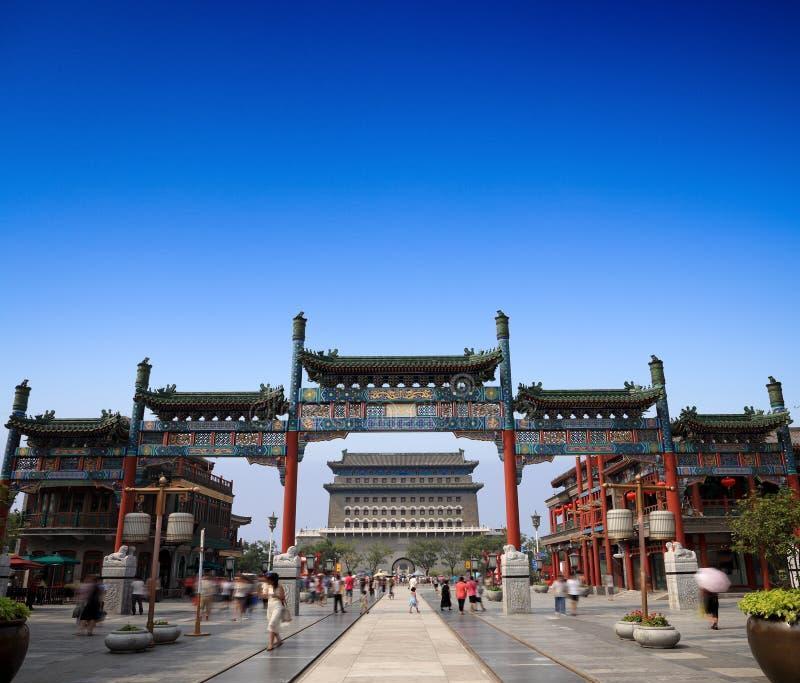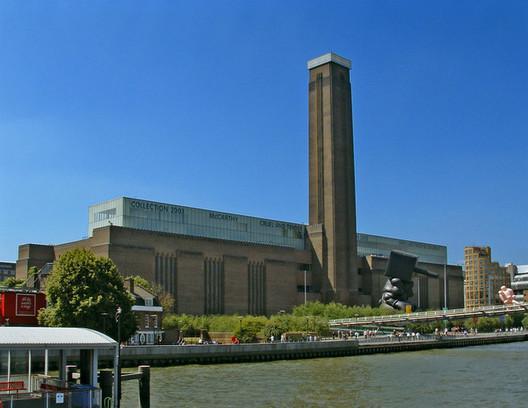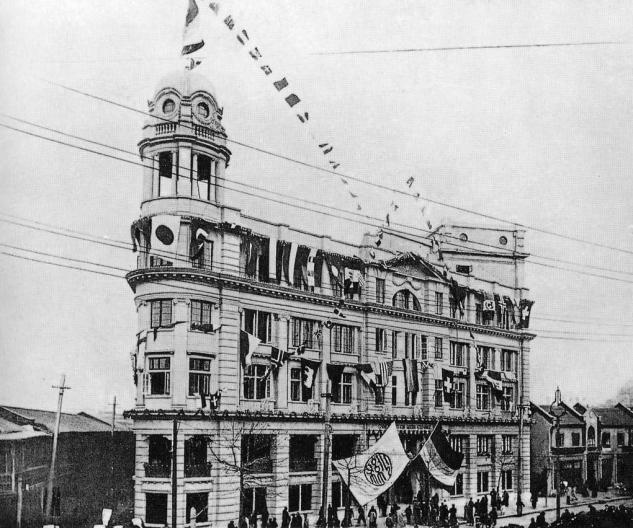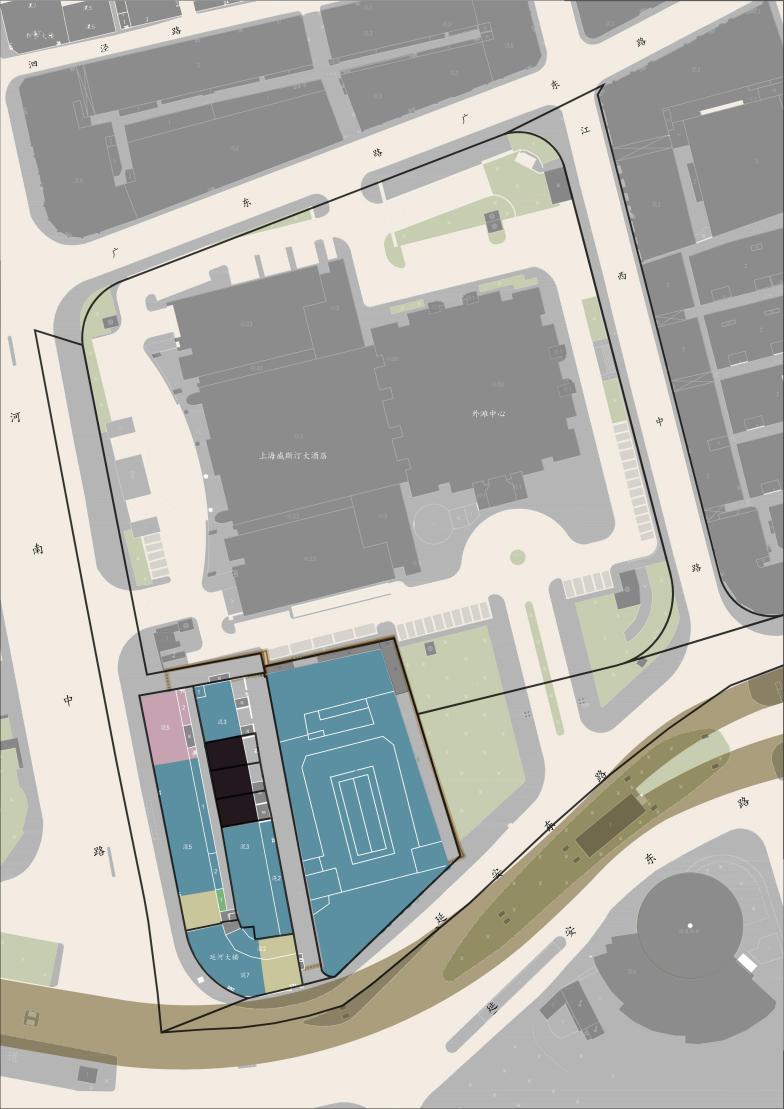1.2ResearchSignificance
PromotingEconomicFeasibilityResearchonAdaptiveReuseofHistorical Buildings
ThisstudycombinesthePrincipleofMinimalInterventionwiththeAdaptive Reusetheorytoexplorehowtoreducerenovationcostswhileenhancingproject revenue,providingascientificandreasonableeconomicevaluationframework fortherenovationofhistoricalmuseumsandmemorialsThisnotonlyfillsthe currentgapinChinaresearchoneconomicmodelsforhistoricalbuildingsbut alsoprovidesmorefeasibledecision-makingreferencesforgovernments, investors,andurbanplanners.
ProvidingaSustainablePathforUrbanRenewal
Aslandfinancefacesdifficulties,thetraditionalgovernment-subsidizedmodel hasbecomeunsustainable,whilemarket-orientedrenovationsfacethedilemma
ofhighcostsandlowreturns.Thisstudyanalyzesinnovativefinancialmodels suchasusagerightsexchangeandresourcebundling,proposinghowtoleverage marketforcestorevitalizehistoricalbuildingsunderfiscalconstraints,exploring asustainablepathforurbanrenewal,andprovidingpracticalreferencesfor futuresimilarprojects
BalancingCulturalHeritagePreservationandCommercialOperations
Therenovationofhistoricalmuseumsandmemorialsoftenfacesthe contradictionbetweenculturalvalueandeconomicbenefitsThisstudyproposes strategiessuchaspreciseinterventionsandbusinessmodelinnovationtoensure economicself-sufficiencywhilepreservingthehistoricalcharacteristicsofthe buildings.Thisnotonlyhelpsincreasepublicawarenessofculturalheritagebut alsoenhancesthesocialandeconomicvalueofhistoricalbuildings,promoting culturaltourismandcreativeindustries
1.3LiteratureReview
UrbanRenewalofCity-CenterMuseumsandMemorials
City-centermuseumsandmemorials,asimportantcomponentsofurbancultural heritage,havealwaysbeenafocusofurbanrenewalresearch.Withthe accelerationofurbanization,manycitiesfacethecontradictionbetween historicalbuildingpreservationandurbandevelopmentZhangSong(2007), inIntroductiontoHistoricalCityPreservation,pointsoutthathistorical buildingsarenotonlycarriersofurbanculturalmemorybutalsoimportant componentsofurbanspatialstructure.Intheprocessofurbanrenewal,howto preservehistoricalbuildingswhilerealizingtheireconomicvalueisanurgent issuetoaddressLiHeping(2012),inPreservationandReuseofUrbanHistorical Buildings,proposesthatthepreservationandreuseofhistoricalbuildings
shouldfocusonfunctionalreplacementandspaceoptimization,enhancingtheir economicvaluethroughreasonablefunctionaladjustmentswhilepreserving theirculturalsignificance.Forexample,transformingmuseumsintoculturaland creativeindustrialparkspreservesthehistoricalvalueofthebuildingswhile enhancingeconomicreturnsthroughcommercialandculturalactivitiesWang Jianguo(2015),inPreservationandReuseofHistoricalBuildingsinUrban Renewal,furtherpointsoutthattherenovationofcity-centermuseumsand memorialsoftenfaceshighrenovationcostsandlimitedrevenuepotential, makingthetraditionalgovernment-subsidizedmodelunsustainableTherefore, exploringneweconomicmodelsandfinancingmethodshasbecomearesearch focus.ZhuGuangya(2005),inPreservationandReuseofHistoricalBuildings, emphasizesthatthepreservationandreuseofhistoricalbuildingsshouldfocus ontheintegrationofculturalvalueandsocialfunctions,enhancingtheir economicvaluethroughreasonablefunctionalreplacementDongWei(2014), inCulturalHeritagePreservationinUrbanRenewal,proposesthatthe renovationofcity-centermuseumsandmemorialsshouldfocusoncoordination withoverallurbanplanning,enhancingeconomicfeasibilitythroughfunctional optimizationandspacereuseExistingresearchhaspredominantlyfocusedon enhancingeconomicfeasibilitythroughfunctionaladaptation,spatial optimization,andpolicycoordination,yetsystematicexplorationoftheunique characteristicsofurban-centermuseumsandmemorialhallsspecificallytheir publicculturalmandates,highvisitortrafficdemands,andmulti-functional potentialremainsconspicuouslyunderdeveloped
AdaptiveReuse
AdaptiveReuseisanimportantstrategyinthepreservationofhistorical buildingsandurbanrenewal,emphasizingtheenhancementofeconomicvalue throughfunctionalreplacementandspaceoptimizationwhilepreservingthe historicalvalueofbuildingsLiuBoying(2016),inPreservationandAdaptive ReuseofIndustrialHeritage,pointsoutthatthecoreofadaptivereuseliesin
achievingfunctionaltransformationthroughminimalintervention,thereby extendingthebuilding'slifespanandenhancingitseconomicvalue.ChenKeshi (2018),inUrbanRenewalandHistoricalBuildingPreservation,throughthe analysisofChinaandinternationalcases,proposesthatthekeytosuccessful adaptivereuseliesinthematchingoffunctionsandspacesForexample,the TateModernintheUKtransformedanoldpowerplantintoamodernart museum,preservingthehistoricalstyleofthebuildingwhileenhancing economicreturnsthroughmodernartexhibitionsandculturalactivities.Zhang Jie(2019),inPreservationandRenovationDesignofHistoricalBuildings,further explorestheeconomicfeasibilityofadaptivereuse,arguingthatreasonable functionalreplacementandbusinessmodelinnovationcanenhanceeconomic benefitswithoutdamagingthebuilding'sstructure.WuLiangyong(2001), inIntroductiontoHumanSettlementEnvironmentScience,proposesthat adaptivereuseshouldfocusontheharmonybetweenbuildingsandthe environment,enhancingeconomicvaluethroughfunctionaloptimizationand spacereuse.WangXiangrong(2017),inPreservationofHistoricalBuildingsin UrbanRenewal,emphasizesthatthekeytosuccessfuladaptivereuseliesinthe matchingoffunctionsandspaces,enhancingtheeconomicvalueofbuildings throughreasonablefunctionalreplacement
PrincipleofMinimalIntervention
ThePrincipleofMinimalInterventionisanimportanttheoryinthepreservation andrenovationofhistoricalbuildings,emphasizingtheminimizationofdamage totheoriginalappearanceofbuildingswhilepreservingtheirhistoricaland culturalvalue.LiuBoying(2016),inPreservationandAdaptiveReuseof IndustrialHeritage,pointsoutthatthePrincipleofMinimalInterventionreduces unnecessarystructuralmodifications,loweringrenovationcostswhile enhancingthemarketappealofprojectsZhangJie(2019),inPreservationand RenovationDesignofHistoricalBuildings,furtherexplorestheapplicabilityof thePrincipleofMinimalInterventionintherenovationofhistoricalbuildingsin
analysis.
a.LiteratureAnalysis:ByreviewingChinaandinternationalliteratureon historicalbuildingpreservation,adaptivereuse,andthePrincipleofMinimal Intervention,existingresearchresultsaresummarizedtoprovidetheoretical supportforthisstudy
b.CaseStudy:Typicalmuseumandmemorialrenovationcases(suchasthe TateModernintheUKandtheBeijingQianmenCulturalandCreativeIndustrial Park)areselectedtoanalyzetheirrenovationstrategies,economicmodels, andimplementationeffects
c.EmpiricalAnalysis:TakingtherenovationoftheOldShanghaiNatural HistoryMuseumastheresearchobject,theeconomicfeasibilityandsocial benefitsofdifferentrenovationplansareexploredthroughfieldresearchand dataanalysis (2)Innovation
Existingresearchmostlyfocusesonthepreservationandrenovationofhistorical buildings,withlessattentionpaidtothespecificofcity-centermuseumsand memorials.Thisstudyfocusesonthisspecifictypeofhistoricalbuilding, exploringitsadaptivereusestrategiesinurbanrenewalAtthesametime,the PrincipleofMinimalInterventioniscombinedwiththeAdaptiveReusetheoryto proposeanewapproachthatachieveseconomicfeasibilitythroughlow-cost renovationandbusinessmodelinnovationwhilepreservingthehistoricalvalue ofbuildings.Finally,throughempiricalanalysis,amuseumandmemorial renovationmodelsuitableforthecontextofurbanrenewalinChinaisproposed, providingdecision-makingreferencesforgovernments,investors,andurban planners.
Chapter3.ComparisonofInternationalandChina
AdaptiveReuseCases
Adaptivereusehasemergedasacriticalstrategyinglobalurbanrenewalefforts, offeringasustainablepathwaytorevitalizehistoricalstructureswhilebalancing culturalpreservationandeconomicfeasibilityByexaminingrepresentative internationalanddomesticcases,thisstudyaimstouncoverhowadaptivereuse projectscanenhanceeconomicreturnsthroughreducedstructuralinterventions, optimizedspatialutilization,andinnovativefinancialmodels.Thissection providesadetailedanalysisoftwolandmarkprojects:theTateModernin London,UnitedKingdom,andtheBeijingQianmenCulturalandCreative IndustrialParkinChina.Throughcomparativeevaluationoftheirrenovation strategies,operationalframeworks,andfinancialoutcomes,thisanalysis identifiesuniversalprinciplesandcontext-specificadaptationsthatcontributeto projectsuccess,withparticularemphasisontheroleofinnovativefinancial mechanismssuchasPublic-PrivatePartnerships(PPP)andusagerights exchangemodelsinaddressingfundingchallengesandreducingfiscal dependency.
3.1InternationalCase:TateModern,UK
TheTateModernislocatedonthesouthbankoftheThamesinLondonIts predecessorwasathermalpowerplant(BanksidePowerStation)builtinthe mid-20thcentury.Afterthepowerplantceasedoperationsin1981,itbecamean abandonedindustrialbuildingatriskofdemolition.However,duetoitsunique industrialarchitecturalstyleandvastspatialpotential,theTateGallerydecided totransformitintoamodernartmuseum,whichofficiallyopenedin2000The renovationoftheTateModernisaclassicinternationalcaseofadaptivereuse,
successfullytransforminganindustrialheritagesiteintoaworld-classcultural landmark.
Duringtherenovationprocess,theTateModernfullyembodiedthePrincipleof MinimalInterventionandtheAdaptiveReusetheory.ArchitectsHerzog&de Meuronmaximizedthepreservationofthepowerplant'soriginalstructure, includingitsiconicchimneyandturbinehall.Theturbinehallwastransformed intoamassiveexhibitionspace,withaheightof35metersandawidthof152 meters,makingitoneofthelargestindoorartexhibitionspacesintheworld
Thisdesignnotonlypreservedthehistoricalstyleoftheindustrialbuildingbut alsoendoweditwithnewfunctions,enablingittoaccommodatelarge-scaleart installationsandexhibitions.Additionally,thearchitectsimprovedthebuilding's lightingandventilationconditionsbyaddingglasscurtainwallsandskylights, enhancingthecomfortofthespaceThislightweightrenovationapproachnot onlyreducedcostsbutalsomaximizedthepreservationofthebuilding's historicalvalue.
Figure1TheexterioroftheTateModern
ThesuccessoftheTateModernliesnotonlyinitsarchitecturalrenovationbut alsoinitsinnovativebusinessmodel.Themuseumisnotonlyavenueforart exhibitionsbutalsogeneratesdiversifiedincomethroughcommercialfacilities suchascafes,restaurants,andsouvenirshopsMoreover,themuseumattractsa largenumberofvisitorsthroughtemporaryexhibitions,artworkshops,and educationalactivities.Forexample,theannual"TurbineHallProject"invites internationallyrenownedartiststocreatelarge-scaleinstallationart,attracting globalartenthusiasts.AccordingtotheTateGallery'sannualreport,sinceits openingin2000,themuseumhasattractedover5millionvisitorsannually, makingitoneofLondon'smostpopulartouristattractions.Additionally,the museumhasdriventheeconomicdevelopmentofthesurroundingarea, promotingculturalrevivalandurbanrenewalintheSouthBank.Thesuccessof theTateModerndemonstratesthathistoricalbuildingscanachieveeconomic feasibilitywhilepreservingtheirculturalvaluethroughminimalintervention andfunctionalinnovation.
3.2ChinaCase:BeijingQianmenCulturalandCreativeIndustrial Park
TheBeijingQianmenCulturalandCreativeIndustrialParkislocatedinthe ChaoyangDistrictofBeijingItspredecessorwasastate-ownedfactorybuiltin the1950sWiththetransformationofBeijing'surbanfunctions,thefactory ceasedoperationsinthe1990s,becominganabandonedindustrialsite.In2006, theBeijingmunicipalgovernmentdecidedtotransformitintoaculturaland creativeindustrialpark,whichofficiallyopenedin2008.Therenovationofthe QianmenCulturalandCreativeIndustrialParkisatypicalChinacaseofadaptive reuse,successfullytransforminganindustrialsiteintoahubforculturaland creativeindustries.
Duringtherenovationprocess,theQianmenCulturalandCreativeIndustrial ParkfullyintegratedthePrincipleofMinimalInterventionandtheAdaptive Reusetheory.Therenovationteammaximizedthepreservationofthefactory's originalstructure,includingitsworkshops,warehouses,andchimneysThe architectstransformedtheworkshopsintoofficespacesandartstudiosthrough lightweightupdates,preservingthehistoricalstyleoftheindustrialbuilding whilemeetingtheneedsoftheculturalandcreativeindustry.Forexample,the tallworkshopsweretransformedintomultifunctionalspacessuitableforboth officeuseandexhibitionsoreventsAdditionally,thearchitectsimprovedthe building'slightingandventilationconditionsbyaddingglasscurtainwallsand skylights,enhancingthecomfortofthespace.Thisrenovationapproachnotonly reducedcostsbutalsomaximizedthepreservationofthebuilding'shistorical value

theQianmenCulturalandCreativeIndustrialParkfocusedmoreonenhancing industrialfunctions,achievingdiversifiedincomethroughtheintroductionof culturalandcreativeenterprisesandcommercialfacilities.
Second,intermsofeconomicreturns,bothcasesachievedsignificanteconomic returnsthroughbusinessmodelinnovation,becomingculturallandmarksand touristhotspotsintheirrespectivecities.However,theTateModern'seconomic returnsmainlycamefromticketsalesandcommercialfacilities,whilethe QianmenCulturalandCreativeIndustrialPark'seconomicreturnsmainlycame fromrentalincomeandcommercialfacilities.Finally,intermsofsocialbenefits, bothcasesdrovetheeconomicdevelopmentofthesurroundingareas, promotingurbanrenewalandculturalrevival.However,theTateModern's socialbenefitsweremainlyreflectedinculturaleducationandpublicactivities, whiletheQianmenCulturalandCreativeIndustrialPark'ssocialbenefitswere mainlyreflectedinindustrialagglomerationandjobcreation.
Fromthesetwocases,wecanderivethefollowingexperiencesandinsights:First, thePrincipleofMinimalInterventionisofgreatsignificanceintherenovationof historicalbuildings.Byminimizinginterventionstotheoriginalstructure, renovationcostscanbereducedwhilemaximizingthepreservationofthe historicalstyleandculturalvalueofbuildings.Second,spaceoptimizationiskey toenhancingtheusevalueandeconomicbenefitsofbuildingsThrough reasonablespaceplanninganddesign,modernfunctionalrequirementscanbe metwhileimprovingthecomfortandattractivenessofbuildings.Finally, businessmodelinnovationisanimportantmeansofachievingeconomic feasibilityforprojects.Byintroducingdiversifiedcommercialfacilitiesand culturalactivities,projectscanachieveeconomicself-sufficiencyandsustainable development
BuildingOverview
Thetotalbuildingareaisapproximately12,655.45squaremeters(withan additional273.46squaremetersoftemporarystructures),andthesingle-floor area(buildingoutline)isapproximately2,591squaremetersThesiteareais approximately2,8774squaremetersThetotalbuildingheightisapproximately 26meters.Thebuildinghasfivefloorsoverall,withsixfloorsinsomeareas.In termsofthebuilding'scurrentcondition,theexteriorfacadeiswell-preserved, withnoadditionaldecorationsordamageexceptforsomeplantsonpartsofthe facadeMostoftheinteriorspacesareexquisitelydecoratedandwell-preserved, butduetolong-termvacancy,theinteriordecorationhassignificantlyaged.The mainpublicandofficespacesarelocatedonthesecondfloorandabove; historically,thefirstfloorwasusedforstorageandequipment,withnonatural lighting Figure4HistoricalphotosoftheOldNatureMuseum
LandOwnership
ThelandownershipofNo.260Yan'anEastRoadincludesthebuildingitselfand thealleyspacestotheeastandnorth.TothenorthofthebuildingaretheBund CenterofficebuildingandtheWestinHotelTothewestofthebuilding,themain buildingofYanheBuildingandtheshopsalongHenanMiddleRoadhave separatelandownership,mainlyconsistingofdirectlymanagedpublichousing andunit-ownedproperties,withsomeassetsownedbyNewHuangpuReal EstateCo.,Ltd.TheauxiliarybuildinginsideYanheBuildingisdividedinto multiplelandownerships,mainlyconsistingofdirectlymanagedpublichousing andindividual-ownedpropertiesundertheShanghaiMaritimeSystem.Thealley betweentheauxiliarybuildingandNo.260Yan'anEastRoadbelongstothe northernmostbuildingoftheauxiliarybuilding.
categorizedintominimalinterventionretrofittingandsubstantialadaptivereuse renovations.
InvestmentCalculation
Option1:Old
NaturalHistory
MuseumandNew
HuangpuUsage
RightsExchange, No Structural Renovation
Option2:Old NaturalHistory
MuseumandNew
HuangpuUsage
RightsExchange, WithStructural Renovation
Option 3: Expropriation+
Structural Renovation
Constructio nPlan Simple Renovat ion Extensiv e Renovat ion Simple Renovat ion Extensiv e Renovat ion Simple Renovat ion Extensiv e Renovat ion Expropriati onCost --30,000--178,000-108,000
Constructio nPeriod 33month36month42month60month60month60month Total Investment except Expropriati onCost -26,700-26,700-25,944-56,886 -157,142-139,623 LandUse RightsCost forOld Natural History -----78,000-78,000
Museum
LandPrice Adjustment Cost ----2,755-4,526-2,471
Engineering Renovation -25,000-25,000-23,000-50,000-60,142-46,000
Financial Cost -1,700-1,700-2,944-4,131-14,474-13,152
Total Rental Income fromOld Natural History Museum (Until 2059)
90,31099,96286,036 100,146111,083103,475
Initial RentalRate forOld Natural History Museum (RMB/sq.m· day) 808580808585
Net Investment Income fromOld 63,61073,26260,09243,261-46,059-36,148
renovationtypicallyinvolvesinteriordecoration,equipmentupdates,and functionaladjustments,whilesimplerenovationmainlyinvolvesnecessary maintenanceandlightweightupdates.
Fromaprofitabilityperspective,theexpropriationmodelfailstoachieve financialviabilityduetoitshighupfrontcostsandinsufficientpost-renovation revenuetooffsetinitialinvestmentsIncontrast,userightsexchangemodels demonstratehigherreturnrates,particularlyinscenariosrequiringnostructural modifications.Whenstructuralmodificationsareimplemented,extensive renovationsyieldlowerprofitabilityduetoelevatedcosts.Conversely,in structuralmodification-freescenarios,moresubstantialrenovationsdespite highercostsgeneratereturnsexceedingrenovationexpenditures,resultingin comparativelyhigherprofitabilityTheseapproachesachievefastereconomic returnsthroughcost-efficientmodificationsandfunctionaloptimization. Comprehensiveanalysisrevealsthatimplementingextensiverenovations withoutstructuralmodificationsmaximizesprofitability.Thisdemonstratesthat undertheminimalinterventionprinciple,lightweightupgradesandfunctional optimizationcanenhanceeconomicfeasibilitywhilereducingrenovationcosts
Comprehensivelyevaluatingtheplans,theusagerightsexchangemodelwithno structuralrenovationandsimplerenovationperformsbestintermsofcostand revenue.Theseplansnotonlyreducerenovationcostsbutalsoachievehigher economicreturnsthroughfunctionaloptimizationandbusinessmodel innovation.Theusagerightsexchangemodelwithstructuralrenovationand extensiverenovation,althoughmoreexpensive,remainsfeasibleincertain situations,especiallywhenthebuildingstructurehassafetyhazardsorhigher functionalrequirements.However,allplansundertheexpropriationmodelare economicallyunfeasibleduetotheirhighcostsandlimitedrevenue.
5.2InstitutionalandRegulatoryCoordination
Adaptivereuseprojectsinurbancentersoftenfaceseriousdelaysevenbefore theybeginOnemajorreasonisfragmentedownershipHistoricalbuildings,such astheOldShanghaiNaturalHistoryMuseum,usuallyhavealongandcomplex propertyhistory.Ownershipmaybesplitbetweengovernmentagencies, collectives,privateindividuals,andlong-termtenants.Thissituationmakesland consolidationverydifficult.
InthecaseoftheOldMuseum,thisfragmentationsloweddowntheearly negotiationphase.Therewasnolegalframeworkthatcouldforceall stakeholderstocooperate.Traditionalapproacheslikefullexpropriationor large-scalebuyoutsweretoocostlyandpoliticallysensitive.Someownersalso heldadvantageouslegalorfinancialpositionsWithoutstrongincentivesorlegal guarantees,theywereunwillingtoreleasetheirrightsTherefore,theproject exploredalternativeconsolidationstrategies.Theseincludedusage-based phasedacquisitionandmonetizinglong-termleaseholds.However,amajor obstacleremained:thelackofflexibleregistrationandtransactionsystemsfor propertieswithmixedownershipThiscausedlongdelaysintheapproval processInvestorsbecamehesitant,unsurewhetherdevelopmentrightscouldbe transferredclearlyorsecurely.IntheOldMuseumproject,theseearlychallenges nearlyhaltedtherenovationbeforedesignworkevenstarted.
5.3FinancialUncertaintyandInvestorHesitation
Mostadaptivereuseprojectsarenotfinanciallyattractiveundercurrentmarket conditionsTheOldMuseumrenovationillustratesthisclearlyHighupfront costswereamajorbarrierTheseincludedlegalfeesforownershipclarification,
supportandincreasedvisitorengagement.
Still,long-termstewardshipremainsachallenge.Themuseumlacksadedicated managementauthoritywithaclearmandateQuestionsaboutwhowillmaintain, fund,andupgradethefacilityovertimearestillopenInprojectswithmultiple stakeholders,thisisacommonissue.Collectiveactionishardtoorganize,and public-privatemodelsoftenlackaccountability.Newgovernancetoolsmayhelp this.Long-termleaseagreements,independentassetmanagers,orjoint managementboardscouldprovidestabilityFortheOldMuseumandsimilar projects,sustainabilitydependsnotjustondesignorconstruction,butonclear andcommittedownershipaftertheribbon-cutting.
demonstratedmarkedlyhigherinternalratesofreturn(IRR)andshorter paybackperiods.Thismodelbypassesthehighfiscalburdenassociatedwith expropriation-basedapproaches,whichoftenincursubstantialcompensation costsandrequirelengthyadministrativeproceduresInstead,itleverages marketmechanismstoreallocatespatialandfunctionalentitlementsmore efficiently.However,tomainstreamthismodel,certainlegalandinstitutional challengesmustbeaddressed,includingpost-exchangeregistrationofproperty rights,managementofsharedspaces,andequitabledistributionofresulting benefitsamongstakeholders
Moreover,thefindingsreinforcethatstructuralrenovationshouldbeavoided whenfeasible,especiallyinprojectsfacinghighcapitalconstraintsoruncertain returnprospectsTheanalysisindicatesthatrenovationscenariosexcluding structuralmodificationfocusingsolelyonspatialoptimizationandcosmetic upgradesoutperformmoreinvasivestrategiesinbothcost-effectivenessand profitability.Whilestructurallyintensiverenovationsmaybenecessaryincases ofsafetyhazardsorfunctionalobsolescence,theyshouldbepursuedwith cautionandonlywhenbackedbystrongeconomicjustificationsandoperational projections
Overall,thisstudydemonstratesthatadaptivereuseguidedbyminimal interventionisnotonlyatheoreticallysoundconservationapproachbutalsoa practicalsolutionforsustainableurbanrenewalinChina’shistoricalurbancores Itprovidesareplicablemodelthatcanbeadaptedtosimilarmuseumand memorialrenovationprojectsnationwide,offeringablueprintfortransforming underutilizedhistoricalassetsintovibrantculturalandeconomicnodes.
6.2PolicyRecommendation:InstitutionalSupportforUsageRights ExchangeandZoningFlexibility
Tofacilitatethebroaderapplicationofadaptivereuseundertheminimal interventionframework,thestudyproposesseveralkeypolicy recommendationsaimedatgovernmentagencies,urbanplanners,andfinancial regulators:
6.2.1InstitutionalizetheUsageRightsExchangeModelinUrbanPlanning Frameworks.
Municipalgovernmentsshouldactivelypromoteandinstitutionalizetheusage rightsexchangemodelasaviabletoolforurbanrenewal,especiallyinareaswith ahighdensityofheritagebuildings.Thisincludesestablishinglegalframeworks thatclearlydefinethescope,procedures,andoversightmechanismsforsuch exchangesPilotprogramsshouldbeencouragedtotestmodelapplicability acrossdifferenturbancontexts,andsuccessfulexamplesshouldbedocumented andstandardizedforbroaderreplication.
6.2.2DevelopFiscalIncentivesforLow-InterventionRenovationPlans.
Localauthoritiesshouldintroducefiscaltoolssuchastaxcredits,low-interest loans,orrenovationsubsidiestoencourageminimalinterventionrenovations Projectsthatpreservetheoriginalarchitecturalelements,avoidmajorstructural modifications,anddemonstratepublicculturalbenefits(e.g.,educational programmingorpublicartinstallations)shouldbeprioritizedinpublicfunding schemesAdditionally,governmentsmayconsiderreducingadministrativefees orexpeditingapprovalprocessesforqualifyingminimal-interventionprojectsto furtherincentivizeparticipation.
6.2.3CreateFlexibleZoningandMixed-UsePolicyGuidelines.
Toincreasethefinancialviabilityofadaptivereuseprojects,zoningpoliciesmust beupdatedtoallowforgreaterflexibilityinusagetypes.Historicalmuseumscan bepermittedtointegratecomplementaryfunctionssuchascafes,bookshops,art galleries,co-workingspaces,oreventvenuesMixed-useguidelinesshouldbe developedtoensuretheseintegrationsdonotcompromisetheculturalvalueor spatiallogicoftheheritagesite.Suchflexibilityenhancesrevenuepotential withoutrequiringintrusivephysicalmodifications.
6.2.4StrengthenStakeholderCoordinationPlatforms.
Urbanrenewalprojectsinvolvingheritagebuildingsoftenfacechallengesrelated tofragmentedpropertyownershipandregulatoryambiguity.Municipalplanning bureausshouldestablishcross-sectoralcoordinationplatformsthatbring togethergovernmentdepartments,privatedevelopers,conservationexperts, legaladvisors,andcommunityrepresentativesTheseplatformscanstreamline negotiations,mediateconflicts,andensuretransparencyinbenefit-sharing. Furthermore,professionalthird-partyevaluatorscanbeengagedtoassess cultural,social,andeconomicoutcomes,ensuringaccountability.
6.2.5EncourageIntegrationofHeritageConservationintoUrban RegenerationPolicy.
Culturalheritagepreservationshouldnotbeviewedasaconstrainton developmentbutratherasacorecomponentofurbanregenerationNational andprovincialplanningstrategiesshouldexplicitlyintegratethepreservationof city-centerhistoricalmuseumsintobroadereconomicdevelopmentgoals,such asculturaltourismpromotion,creativeindustryincubation,andgreen infrastructureplanningBydoingso,heritageassetscanberepositionedas activecontributorstosustainableurbangrowthratherthanstaticburdenson publicbudgets.
6.3PracticalRecommendations
Inadditiontopolicy-levelinterventions,practitionersandprojectdevelopers involvedintheadaptivereuseofhistoricalmuseumsshouldadoptasetof practicalstrategiestomaximizebotheconomicandculturaloutcomes:
6.3.1PrioritizeFunctionalOptimizationoverStructuralAlteration.
Projectteamsshouldbeginwithacomprehensivespaceaudittoassessthe functionalpotentialofexistingstructuresWherefeasible,buildinginteriors shouldbereorganizedthroughlightweightinterventionsthatenhance usabilitysuchasreconfiguringcirculationroutes,improvinglightingand ventilation,andintroducingmodularinfrastructurewithoutdisturbingthe foundationalstructure.Thisapproachrespectsheritagepreservationmandates whileimprovingvisitorexperienceandoperationalefficiency
6.3.2AdoptMulti-ChannelRevenueStrategies.
Toimprovefinancialsustainability,adaptivereuseprojectsshoulddevelop diversifiedrevenuemodels.Beyondtraditionalincomestreamssuchasticketing andgiftshops,additionalrevenuecanbegeneratedthroughspaceleasing(eg, toeducationalinstitutionsorculturalstartups),brandedevents, heritage-themedmerchandising,anddigitalexperiences(e.g.,virtualtours, onlineexhibitions).Thesestrategiescanoffsetmaintenancecostsandenable projectstoachievelong-termfinancialindependence
6.3.3LeverageCulturalProgrammingforPublicEngagement.
Preservedhistoricalsitesmustactivelyengagethepublictoremainrelevant. Projectoperatorsshouldorganizeregularculturalprogramming,including communityworkshops,seasonalfestivals,artistresidencies,andschool partnershipsSuchinitiativesnotonlydrivevisitortrafficbutalsoreinforcethe socialmissionofheritagesitesasinclusivepublicspaces.Specialattention
shouldbepaidtocuratingprogramsthatreflectlocalhistoryandidentity, strengtheningtheemotionalconnectionbetweenthesiteanditssurrounding community.
6.3.4EmbraceDigitalToolsforMonitoringandAdaptability. Tosupportongoingoptimization,projectteamsshouldincorporatedigital toolssuchasBuildingInformationModeling(BIM),InternetofThings(IoT) sensors,anddatadashboardstomonitorstructuralperformance,energy consumption,anduserbehaviorThesetoolsprovidereal-timefeedbackthatcan informmaintenancestrategies,exhibitplacement,andspacereconfiguration. Moreover,digitalplatformscanhelpattractyoungeraudiencesandsupport hybridexperiences(physicalandvirtual),expandingthemuseum’sreach.
6.3.5AddressEquityandInclusivityinSiteReuse. Whileeconomicviabilityisacentralconcern,adaptivereuseprojectsmustalso ensuresocialequity.Planningshouldincludeprovisionsforuniversal accessibility(e.g.,ramps,elevators,multilingualsignage),affordableaccess(e.g., freeentrydays,studentdiscounts),andinclusiveprogrammingthatreflects diverseculturalnarrativesByembeddinginclusivityintoprojectdesign, historicalmuseumscanbecomeactiveagentsinpromotingcultural democratizationandcommunitywell-being.
Bibliography
1.Chen,K.(2018).UrbanRenewalandHistoricalBuildingPreservation.Beijing: ChinaArchitecture&BuildingPress
2Chen,T(2021)CulturalHeritagePreservationandUrbanDevelopment Beijing:ChinaArchitecture&BuildingPress.
3.Dong,W.(2014).CulturalHeritagePreservationinUrbanRenewal.Beijing: ChinaArchitecture&BuildingPress.
4Li,H(2012)PreservationandReuseofUrbanHistoricalBuildingsBeijing: ChinaArchitecture&BuildingPress
5.Li,T.(2020).ApplicationofPPPModelsinUrbanRenewal.Urban DevelopmentStudies,27(4),78-84.
6.Liu,B.(2016).PreservationandAdaptiveReuseofIndustrialHeritage.Beijing: ChinaArchitecture&BuildingPress
7Wang,J(2015)PreservationandReuseofHistoricalBuildingsinUrban Renewal.UrbanPlanning,39(5),45-52.
8.Wang,X.(2017).PreservationofHistoricalBuildingsinUrbanRenewal. UrbanPlanning,41(3),56-62.
9Wang,S(2018)BalancingCulturalandEconomicValueinUrbanRenewal UrbanPlanningForum,41(2),63-69
10.Wu,L.(2001).IntroductiontoHumanSettlementEnvironmentScience. Beijing:ChinaArchitecture&BuildingPress.
11.Zhang,J.(2019).PreservationandRenovationDesignofHistoricalBuildings. Beijing:ChinaArchitecture&BuildingPress
12Zhang,S(2007)IntroductiontoHistoricalCityPreservationShanghai: TongjiUniversityPress.
13.Zhu,G.(2005).PreservationandReuseofHistoricalBuildings.Beijing:China Architecture&BuildingPress.
4





